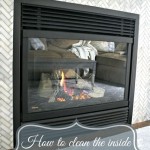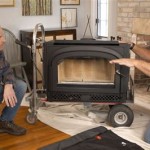Adding A Gas Fireplace To An Existing Home: A Comprehensive Guide
The prospect of adding a gas fireplace to an existing home often conjures images of cozy evenings and increased property value. While the notion is appealing, the process involves careful planning, adherence to safety regulations, and a thorough understanding of installation requirements. This article provides a comprehensive guide to navigating the complexities of adding a gas fireplace, covering key considerations from the initial planning stages to final inspection.
Before embarking on this project, homeowners should understand that adding a gas fireplace isn't simply a cosmetic upgrade. It involves altering the home's infrastructure, potentially affecting gas lines, venting systems, and electrical wiring. Consequently, professional expertise is often required to ensure safe and compliant installation. This guide serves as a foundation for informed decision-making, empowering homeowners to engage effectively with contractors and navigate the permit process.
Key Point 1: Planning and Assessment
The initial phase involves meticulous planning and a comprehensive assessment of the home's existing infrastructure. This stage lays the groundwork for a successful and safe installation. It is crucial to determine the feasibility of the project and identify any potential challenges early on.
First, consider the desired location of the gas fireplace. Several factors influence this decision, including aesthetics, functionality, and structural limitations. Ideally, the fireplace should be positioned in a central living area to maximize heat distribution and visual appeal. However, existing structural elements, such as load-bearing walls, may restrict placement options. A thorough inspection of the intended location is necessary to identify any potential obstructions or structural modifications required.
Next, assess the existing gas line capacity. A gas fireplace requires a dedicated gas line with sufficient pressure to operate efficiently. Consult with a qualified gas technician to determine if the existing gas line can accommodate the additional load. If the existing line is insufficient, a new gas line installation may be necessary, adding to the overall project cost and complexity. The gas technician will assess gas pressure and flow rates to ensure safe and reliable operation of the fireplace. They will verify that current regulations based on the International Fuel Gas Code (IFGC) are being followed.
Venting is another critical aspect of the planning phase. Gas fireplaces require proper venting to exhaust combustion byproducts safely outside the home. There are two primary venting options: direct vent and B-vent. Direct vent systems draw combustion air from outside and exhaust directly outside through a sealed system. This option is often preferred for its safety and efficiency. B-vent systems utilize existing chimneys or create new vertical vents to exhaust combustion gases. The choice of venting system depends on the home's architecture, local building codes, and the type of gas fireplace selected. A qualified HVAC technician can assess the ventilation requirements and recommend the most suitable option.
Finally, consider electrical requirements for the gas fireplace. Many gas fireplaces require electricity to power the ignition system, blower fan, and other features. Ensure there is a nearby electrical outlet or plan for new electrical wiring to be installed. Consult with a licensed electrician to ensure the electrical wiring meets safety standards and local building codes. If the fireplace has remote control features, the electrician will make sure that the outlet can support those needs as well.
Key Point 2: Selecting the Right Gas Fireplace and Contractor
Choosing the right gas fireplace and a qualified contractor is crucial for a successful installation. This involves researching different fireplace models and comparing quotes from multiple contractors.
Research different types of gas fireplaces. Gas fireplaces come in various styles, sizes, and heat outputs. Popular options include gas inserts (designed to fit into existing wood-burning fireplaces), freestanding gas stoves, and built-in gas fireplaces. Consider the heating needs of the space and select a fireplace with the appropriate BTU (British Thermal Unit) rating. BTU measures the amount of heat the fireplace produces. Over-sizing can lead to excessive heat and energy waste, while under-sizing can result in inadequate heating. Also, consider the aesthetic appeal of the fireplace and choose a model that complements the home's décor. There are various options for media as well, like fire glass and ceramic logs.
Obtain multiple quotes from licensed and insured contractors. Request detailed quotes that outline the scope of work, materials, labor costs, and permit fees. Verify that the contractors have experience installing gas fireplaces and are familiar with local building codes. Check their references and read online reviews to assess their reputation and quality of workmanship. Ensure the contractor provides a written warranty for their work. Do not rely solely on the lowest price; consider the contractor's experience, reputation, and the quality of materials they use. An experienced contractor will be able to identify potential problems and offer solutions before and during the project.
Confirm contractor licensing and insurance. Before hiring a contractor, verify that they hold the necessary licenses and insurance required by the local jurisdiction. A valid license ensures that the contractor has met certain qualifications and is authorized to perform gas fireplace installations. Insurance protects the homeowner from liability in case of accidents or property damage during the installation process. Request proof of insurance and verify the coverage details with the insurance company.
Ensure a comprehensive contract is in place. Once a contractor is selected, a detailed contract should be drafted outlining all aspects of the project. The contract should specify the scope of work, project timeline, payment schedule, materials used, permit responsibilities, and warranty information. Review the contract carefully and ensure that all terms and conditions are clearly understood before signing. A comprehensive contract protects both the homeowner and the contractor and minimizes the risk of disputes during the project.
Key Point 3: Installation, Inspection, and Safety
The installation process must adhere to strict safety standards and building codes. A licensed professional should conduct the installation to ensure compliance and minimize the risk of hazards.
Adhere to all local building codes and obtain the necessary permits. Before starting the installation, obtain the required permits from the local building department. Building codes regulate various aspects of the installation, including gas line connections, venting requirements, and electrical wiring. Failure to obtain permits or comply with building codes can result in fines, delays, and potential safety hazards. The contractor is typically responsible for obtaining the necessary permits, but it is the homeowner's responsibility to ensure that all required permits are in place before work begins.
Ensure proper gas line connections and venting. The gas line connections must be installed by a qualified gas technician to prevent leaks. The technician will pressure-test the gas line to ensure it is leak-free before connecting it to the fireplace. The venting system must be installed according to the manufacturer's instructions and local building codes to ensure proper exhaust of combustion byproducts. Improper venting can lead to carbon monoxide poisoning, a serious health hazard. A carbon monoxide detector should be installed near the gas fireplace to provide an early warning of any potential leaks.
Conduct a final inspection and testing. After the installation is complete, schedule a final inspection with the local building department. An inspector will verify that the installation meets all applicable building codes and safety standards. The inspector will check the gas line connections, venting system, electrical wiring, and overall installation quality. Any deficiencies identified during the inspection must be corrected before the fireplace can be used. After the inspection, test the fireplace to ensure it operates properly and safely. Pay attention to the flame characteristics, blower fan function, and remote control operation.
Regular maintenance and safety checks are crucial for the long-term safe operation of the gas fireplace. Schedule annual maintenance checks with a qualified HVAC technician. The technician will inspect the gas line connections, venting system, burner assembly, and control system. They will also clean the fireplace and replace any worn or damaged parts. Conduct regular visual inspections of the fireplace and venting system for any signs of damage or deterioration. Keep the area around the fireplace clear of flammable materials. Ensure that the carbon monoxide detector is functioning properly and replace the batteries regularly. Educate all household members about the safe operation of the gas fireplace and the importance of carbon monoxide safety.
Adding a gas fireplace to an existing home is a significant undertaking that requires careful planning, professional expertise, and adherence to safety regulations. By following this comprehensive guide, homeowners can navigate the complexities of the project and ensure a safe and successful installation. Ultimately, this investment can enhance the home's comfort, aesthetics, and value.

Adding A Gas Fireplace To An Existing Home Just Log Fires

Adding A Fireplace To Existing Home Where For Fireplaces

Convert To Gas Installing Fireplace Inserts Doctor Flue
How To Install Gas Fireplace Insert Heat Glo

Adding A Gas Fireplace To Our Living Room Kath Eats

Existing Fireplace Or A Brand New Build Lopi Fireplaces

Does A Fireplace Add Value To House Vertical Chimney Care
10 Reasons To Add A Gas Fireplace Your Home Heat Glo

Your Home Doesn T Have A Fireplace And You Want To Add One

How To Add A Gas Fireplace An Existing Home Appleby Systems
Related Posts








